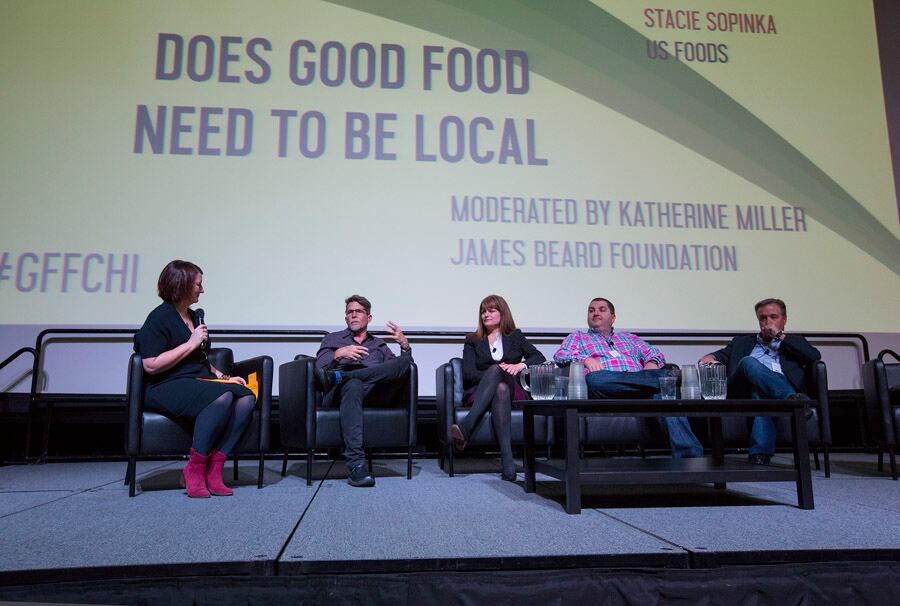At the Good Food Festival in Chicago, which took place March 16-18, moderator Katherine Miller, senior director of food policy advocacy at the James Beard Foundation, asked the attendees to raise their hand if buying local is important to them. A majority of hands went up.
Then, she asked how many people in the audience like bananas, or avocados—fruits that do not grow locally in Illinois, at least without greenhouses and a ton of energy—and almost as many hands were in the air, including the hands that were up when asked if buying local is important to them.
Local is in the eye of the beholder
But the definition of ‘local’ differs from person-to-person. A report from Euromonitor in 2014 found that the propensity for all things local “expresses a local outlook seeking to return to traditional regional and ethnic communities,” and that “a search for a regional and local identity is emerging.”

There’s also the perception that local has less of a carbon footprint because it travels less, and because it means consumers are supporting their local community, the report added.
But where is local? The five panelists on stage that day each had their own way of defining local. “I think local is geographical, let’s say 250 miles. I think you have different subject matters to talk about in terms of produce, dairy, meats, they’re all different,” said Jim Murphy, chairman of Chicago tomato brand MightyVine, which supplies to local grocers Local Foods, Jewel-Osco, and the region’s Whole Foods Market.
Murphy was joined by Rick Bayless celebrity chef and founder of the retail brand Frontera (which he sold to ConAgra in September 2016); Stacie Sopinka, VP of product development at foodservice sector distributor US Foods; and Lenny Lebovich, founder and CEO of PRE Brands, a packaged perishables brand which has a line of packaged steak meats.
For Bayless, using locally grown ingredients, or even naming the locale of where an ingredient was sourced from, is a powerful storytelling tool.
“The grocery store, it’s more price competitive there,” he said. “We tell so many stories that it loosens the reign on the price. The more stories you can tell I guess the more is invested in the price. So when they taste it, they’re tasting a much broader perspective of things instead of ‘Oh, I can get this for cheaper.’”
Not necessarily a synonym for ‘better-for-you’ or ‘better for the environment’
For Lebovich, ‘local’ is merely a geographic criterion that is not synonymous with ‘better-for-you.’ This is the case with his brand’s 100% grass-fed beef, which he argues yields better quality meats and also a better impact on the environment.
“There’s about 250 times more grass-fed beef outside than there is in the United States,” Lebovich said. “If we think of the US supply of grass-fed beef, we pretty much will have a hard time supplying 25 grocery stores or restaurants on a consistent basis.”
And there’s a movement among big suppliers to help smaller producers reach a wider audience. “[Our] assortment reflects each of the [30] distribution centers and warehouses, so there’s a lot of work done at the local level with suppliers,” Sopinka said. Distributors like US Foods often build in a ‘scouting’ component in its model to look up smaller producers within proximity to distribution centers for the freshest end product.
There is more of an effort both from the food industry and consumer groups to increase awareness that ‘local’ can’t be defined in broad strokes to mean ‘better.’ “Should you buy local? It depends,” said Alexander Gillet, CEO and co-founder of rating system HowGood, in a previous interview with FoodNavigator-USA.
His research and rating company puts a product’s ‘goodness’ ranking on store shelves instead of on pack, which allows for variability between stores. The distance a product has to travel may support or dent the product’s score, but so would the energy to produce it. “If you buy a locally-grown avocado in upstate New York, its [environmental] impact would be horrendous, because you have to keep it warm year-long."
